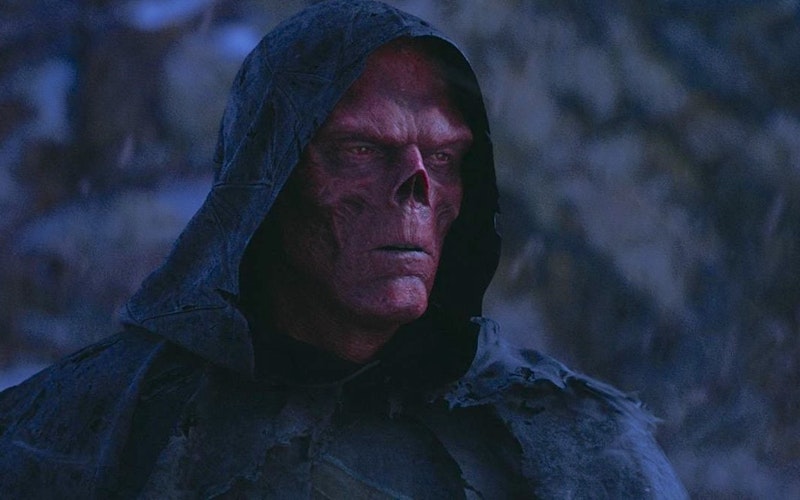
Movies
Soul Stones and Sacrifice in Avengers: Endgame
Editor’s note: Yeah, we’ll be spoiling stuff.
It was difficult to evaluate Avengers: Infinity War on its own merits, as it was the first half of a two-part epic. Avengers: Endgame, the conclusion of the tale, has a clearer story to tell, one that drives home the theme of sacrifice that Infinity War set up but did not fully understand.
One of Endgame’s most debated moments essentially revisits a crucial scene from Infinity War, in which genocidal villain Thanos (Josh Brolin) takes his daughter Gamora (Zoe Saldana) to the distant planet Vormir to retrieve the Soul Stone—one of the Infinity Stones that he needs to enact his plan to wipe out half the life in the universe. Once there, Thanos discovers that he would be required to sacrifice something he “truly loved” in order to retrieve the stone: a soul for the Soul Stone. In a cruel twist on Abraham’s near sacrifice of Isaac, Thanos goes through with the act, unwilling to let his love for his daughter get in the way of his goal.
In Endgame, Black Widow (Scarlett Johansson) and Hawkeye (Jeremy Renner) find themselves in a remarkably similar position. They, too, travel to Vormir—years before Thanos’ fateful journey there thanks to a breakthrough in time travel. Black Widow and Hawkeye don’t know what awaits them on Vormir, only that they need the Soul Stone for the chance to reverse Thanos’ act of mass murder. Once on Vormir, they are confronted with the same situation Thanos found himself in. One of them must give up someone they love. One of them must die. There are no alternatives and no second chances. Instead of drawing straws or giving up, Hawkeye and Black Widow each volunteer to be the sacrificial lamb.
The two scenes demonstrate an important difference between Thanos and the Avengers. Thanos works alone, while the Avengers are a team. Thanos has henchmen, but they’re afterthoughts and clearly not his equals. Black Widow and Hawkeye are friends. They love each other and have a long history together. They’ve fought alongside each other and they’ve saved the world together multiple times. Neither is willing to let the other go. Each genuinely wants to give the other a chance to live, to save the other Avengers, to carry on the team’s mission of bringing back all those across the universe who have died. Each is willing to die in order to do it, to “lay down one’s life for one’s friends.”
One of them must give up someone they love. One of them must die.
In John 15, where Christ discusses this act of “greater love,” he begins by talking about his disciples as being part of a community—a team, even. He speaks about being the vine in which his branches, the disciples, abide. His disciples can’t be his equals, but they can be his friends, which commentators have described as a revolutionary notion. “The love God showed toward Jesus he showed toward his disciples so they could show it to each other,” Osvaldo Vena writes. “When they love in this way, their love becomes impregnated with divine qualities. It is not just an emotional, cozy feeling, but a conscious decision to put yourself on the line and risk everything for the other.”
In Endgame, Black Widow and Hawkeye literally come to blows on Vormir, fighting to be the one to leap from the cliff to the certain death, thereby earning the Soul Stone for the other. The scene is a reversal of the vicious duel between the two characters in 2012’s The Avengers, as well as a callback to Captain America: Civil War, in which Hawkeye and Black Widow find themselves on opposite sides of that movie’s larger superhero rift. (Hawkeye is accused of pulling his punches in that particular fight.) And, of course, the Endgame scene is a retort to Thanos’ sacrifice of Gamora, which was unwilling on her part and cruel on his.
Neither Hawkeye nor Black Widow pull their punches on Vormir. Both are in earnest. They want to save the world, yes, but this fight is also personal. Each hero doesn’t want the other to die. The scuffle is quick and efficient, a chain of actions in which Black Widow and Hawkeye take turns knocking each other down in a race to be the first one off the cliff. At the last moment they hurtle off the edge together, Black Widow attaching a safety rope to Hawkeye even as he grabs her arm, refusing to let her go. Dangling there, they embody The Message’s translation of John 15: “This is my command: Love one another the way I loved you. This is the very best way to love. Put your life on the line for your friends.” Black Widow gets the upper hand, slips free from Hawkeye's grip, and falls to her death. She provides him with the Soul Stone and a chance to bring back his family, whose disappearance at the hands of Thanos served as Endgame’s haunting opening scene.
Unlike Infinity War, which forced sacrifices on characters for the sake of generating tension and drama, Endgame has a much more hopeful understanding of the concept. The decision to make a sacrifice in Endgame is still a difficult one, but it’s pure self-sacrifice, a conscious decision made in the face of giving up and walking away. Here, the Avengers aren’t giving up someone else for dead or killing another person to achieve some goal, but laying down their hopes and fears and desires and putting their own bodies on the line in order to save their friends and, they hope, the rest of the universe. There is no greater love.
Topics: Movies